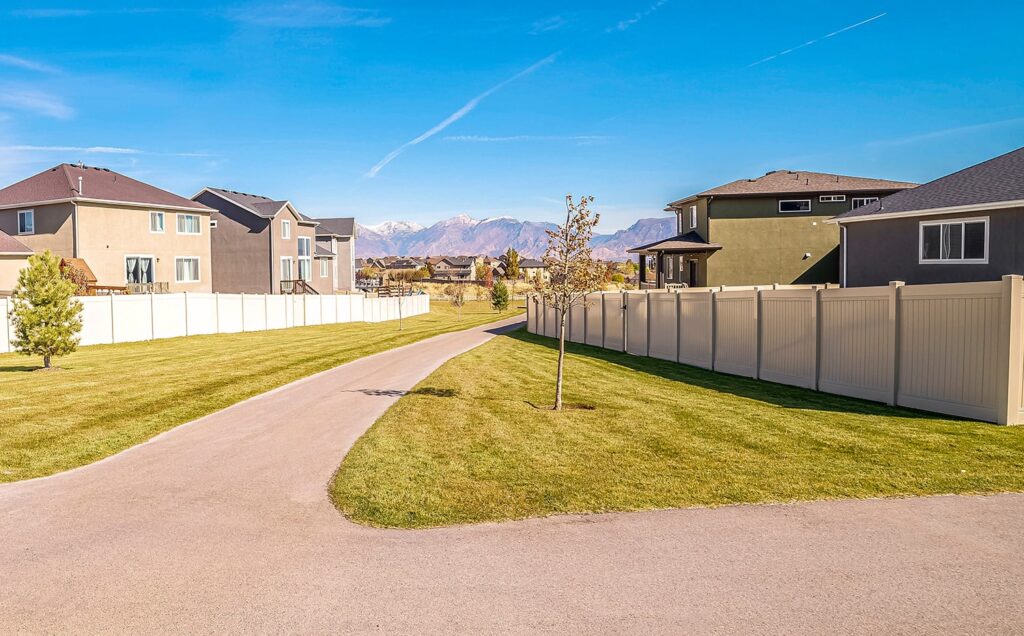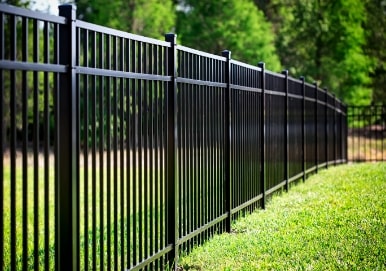Building a Fence on an Easement is a common hurdle we see in a lot of fence projects. When it comes to property improvements, building a fence is often one of the first projects homeowners consider. It’s a straightforward way to enhance privacy, security, and even the aesthetic appeal of your property. However, if your plans involve building on or near an easement, the process can become significantly more complex. This comprehensive guide aims to navigate the intricacies of easements and provide practical advice for homeowners looking to build a fence on one.
Understanding Easements
An easement is a legal right to use another’s land for a specific purpose. Easements are common in residential areas for utilities (such as water, gas, and electricity lines), access routes, and shared spaces. They can be public or private and are typically recorded with your property deed.
Types of Easements
- Utility Easements: Allow service providers to install and maintain infrastructure.
- Private Easements: Grant individuals or entities access through or use of part of your property.
- Public Easements: Often involve sidewalks and roads, allowing general public access.
Easements are established through agreements between parties, necessity, court orders, or, in some cases, by long-term customary use.

The Impact of Easements on Property Rights
Owning property with an easement doesn’t deprive you of ownership rights. However, it does restrict certain uses of the land. For instance, erecting permanent structures like fences might violate the easement’s terms or hinder its intended use.
Building a Fence on an Easement
Before planning your fence, it’s crucial to understand the easement’s restrictions. Building without regard to these can lead to legal disputes, fines, and even the removal of the fence at your expense.
Steps to Take Before Building
- Research and Documentation: Consult your property deed and local land records to understand the easement’s specifics.
- For Richmond, start here: https://www.rva.gov/planning-development-review/faq
- Consultation: Legal professionals and surveyors can offer valuable insights into your rights and restrictions.
- Notification: Inform easement holders of your plans to ensure no conflicts arise.
- Obtaining Permits: Local authorities can guide you through necessary permits and regulations.
Considerations for Building a Fence on an Easement
- Zoning Laws: Local zoning laws may impose additional restrictions on fence height, style, and location.
- Access Rights: Ensure your fence does not obstruct the easement’s use, particularly for utility and emergency services.
Case Studies and Examples
Reviewing how others have successfully navigated building fences on easements can offer valuable lessons. For instance, a homeowner might reroute a section of the fence to accommodate an easement or choose a removable fence design for utility access.
Best Practices and Tips for Building a Fence on an Easement
- Transparency: Open communication with easement holders and neighbors can prevent misunderstandings.
- Flexibility: Be prepared to adjust your plans based on legal advice and easement requirements.
- Documentation: Keep detailed records of agreements, permits, and communications related to your fence project.
Conclusion
Building a fence on an easement requires careful planning, legal consultation, and respect for shared land use rights. While it may present challenges, thorough preparation can lead to successful outcomes that satisfy all parties involved. Always prioritize legal compliance and considerate negotiation to ensure your fencing project enhances your property without infringing on the rights of others.
FAQs for Building a Fence on an Easement
Q: Can I build a fence on an easement without permission? A: It’s risky. Always seek approval from easement holders and obtain necessary permits to avoid legal complications.
Q: What happens if I build a fence and it infringes on an easement? A: You may be required to remove or modify the fence at your own expense, and could face legal action or fines.
Q: How can I find out if there’s an easement on my property? A: Check your property deed, and local land records, or consult a professional surveyor for detailed information.
Further Resources
For more information or assistance, consider consulting legal professionals specializing in property law, local government offices for zoning and permits, and utility companies for specific easement details.
Start here at the Richmond Virginia Gov Website
Review their FAQ, where they mention building on an easement





